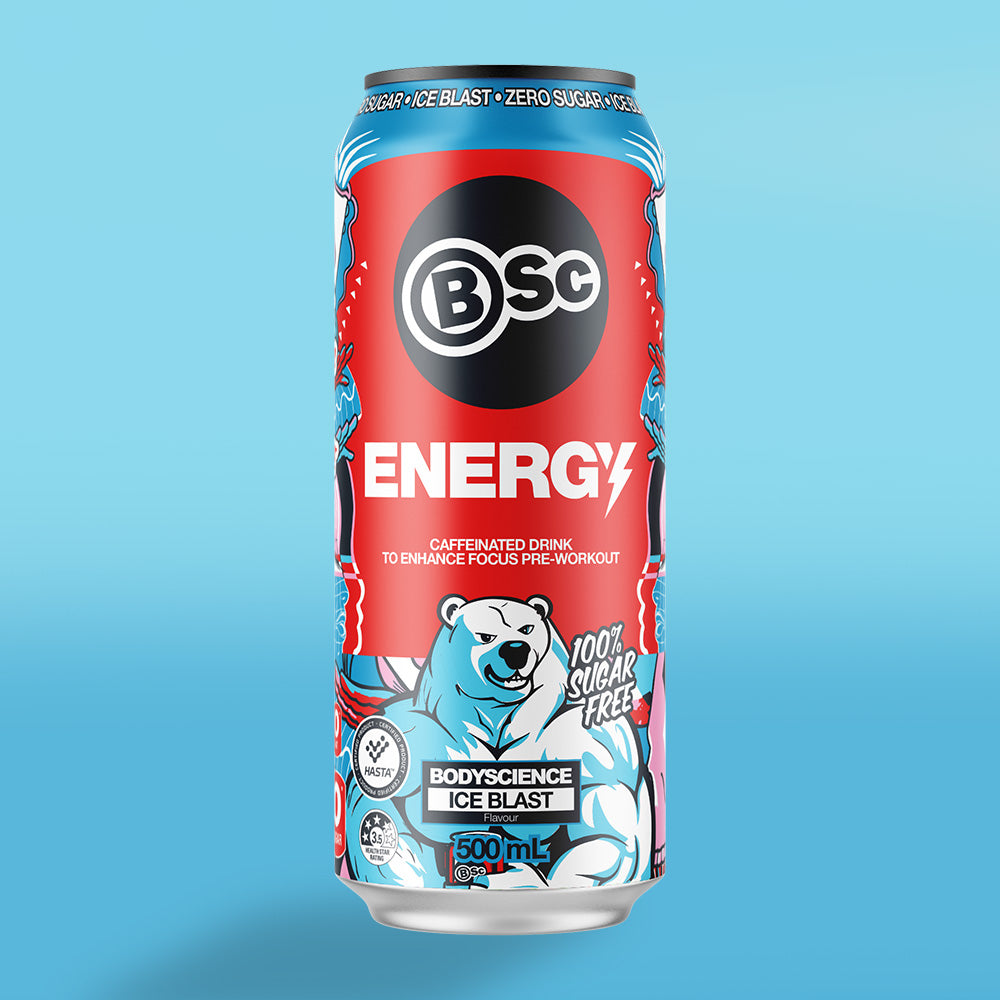Does Resistance Training Burn Fat? Let's Break It Down
If your exercise goal is fat burning, you’re probably struggling with that age-old question — to cardio, or to lift?
Many argue that cardio is the only surefire way to lose weight. It certainly is an important component of any well-rounded and balanced exercise routine, but it’s not the only exercise you should be doing for fat burning. In fact, it’s just as important to incorporate resistance training into your workout program to hit those weight loss goals.
So, does resistance training burn fat? Short answer: yep, and in this guide, we break down how and why.
What Is Resistance Training?
Also referred to as strength training or weight training, resistance training focuses on exercising a muscle against a form of resistance. It’s designed to improve muscular fitness, strength, power, hypertrophy (increase and growth of muscle cells), and anaerobic endurance. Resistance training is founded on the principle that muscles of the body will work to overcome resistant force when required to.
When you practise resistance training consistently, your muscles become stronger, and your joint function, bone density, and tendon and ligament strength also improve.
Australia’s Physical Activity and Sedentary Behaviour Guidelines currently recommend adults complete muscle strengthening exercises two days a week. To maintain your strength gains, you should change up your resistance training program every 6 to 8 weeks. Changes may include increasing your sets and reps, swapping certain exercises for new ones, lifting heavier, and increasing the frequency of your workouts.
In your resistance training program, you might consider using:
- Free weights i.e. dumbbells, barbells, kettlebells
- Medicine balls
- Weight machines
- Resistance bands
- Suspension equipment
- Body weight i.e. planks, sit-ups, lunges, squats

How Much Does Strength Training Increase Your Metabolism?
While we often only credit cardio with firing up our metabolism, resistance training actually plays a part in boosting your metabolism. In fact, a review of 18 studies found that resistance training was more effective for improving your metabolism than aerobic training. Additionally, this study found that 9 months of resistance training was enough to significantly increase the participants’ resting metabolic rate. This research proves it’s possible to significantly boost your metabolism in under a year by consistently practising resistance training.
So, why does strength training increase our metabolism? It really comes down to the relationship between resistance training, gaining muscle mass and resting and basal metabolic rates. Resistance training can help to increase our resting metabolic rate (RMR) and basal metabolic rate (BMR) by helping us build muscle mass because greater muscle mass results in a higher metabolic rate.
Your RMR represents the number of calories your body needs to function while resting and completing low-effort day-to-day activities such as eating, walking for short periods, using the bathroom, and shivering.
Your BMR measures the calories your body needs to perform necessary functions to keep you alive, such as pumping blood through your body, digesting food, breathing, and keeping a stable body temperature.
Both measurements explain how many calories your body burns when you’re not exercising. They are usually around the same number. Your metabolic rate is largely determined by factors outside of your control, such as genetics, sex, age, hormones, and the size of your organs. However, these metabolic rates can be slightly increased when you gain more muscle mass. The more tissue you have, the more calories you can burn. Your muscles burn more calories at rest than other tissues, such as fat.
Approximately every 0.45kg of muscle burns about six calories per day at rest, which is three times as many calories that 0.45kg of fat burns. If you were to gain 4.5kg of muscle and lose 4.5kg of fat, you’d burn an extra 40 calories a day. So, having more muscle is key to increasing your RMR and BMR. And how do you gain more muscle? Resistance training.
One study looked at the RMR of participants after 24 weeks of weight training. In men, there was a 9% increase in resting metabolic rate and a 4% increase for women. In caloric terms, the RMR increased by 140 calories per day for men, and 50 for women. While building muscle mass won’t make your metabolism skyrocket, it will still help to bump it up. This can make a significant difference over time.
We also know that our bodies begin to lose muscle mass as early as age 30. In fact, women lose up to 15% of total body muscle by age 50.
As we explained above, muscle mass is closely linked to metabolism. So, when we lose muscle mass, our metabolism also declines. Resistance training helps us maintain muscle mass as we age, which in turn helps us maintain our metabolic rate.
Does Resistance Training Burn Fat?
If you’ve ever sought the assistance of a personal trainer to help you burn fat, you may have been surprised to hear them recommend resistance training over cardio. If your trainer recommended this approach, you were in good hands; resistance training does in fact burn fat.
How Resistance Training Burns Fat
Let’s take a look at the key ways in which resistance training can lead to fat burning. It Creates Changes at a Cellular Level. Recent research published by the FASEB Journal in 2021 took a deep dive into why resistance training burns fat. It was the first publication that demonstrated how weight training causes changes in the way fat cells operate.
Essentially, resistance training initiates metabolic adaptations in fat tissue through a process called mechanical loading. This is where the muscles are stressed through lifting, pulling and pushing exercises. The muscles respond to this loading, and the cells in these muscles begin releasing a substance that delivers instructions to the fat cells. This prompts the fat cells to begin the fat-burning process, not just through the working muscle but through the whole body.
This provides insight into how resistance training can provide advantages even for non-muscle tissue. While aerobic exercise can trigger fat burning to a degree, resistance training is particularly powerful in creating cellular changes that streamline the process. It Creates the After Burn Effect.
Resistance training can help to burn fat because strength training triggers Post-Exercise Oxygen Consumption (EPOC), also known as the ‘after burn’ effect. This EPOC process means our bodies continue to burn fat for hours after we’ve finished working out. Let’s take a look at why EPOC happens.
When we exercise, our muscles need more energy than they do when they’re resting. Energy comes from our muscle's ability to break down fat and carbohydrates with the assistance of oxygen. During exercise, we breathe faster and our heart works to pump as much oxygen, fat, and carbohydrates to our working muscles as possible.
Once we’ve finished exercising, the oxygen uptake in our bodies is elevated. This helps to restore our muscles by breaking down fat and carbohydrate stores.
This process is known as Post-Exercise Oxygen Consumption (EPOC). In other words, EPOC essentially describes how long oxygen remains elevated in our bodies post-workout to break down fat and repair our muscles.
Resistance training triggers the EPOC process because through resistance training, our muscles become fatigued and oxygen remains in our bodies for a long period of time, breaking down fat in the meantime.

A research study found that both high-intensity aerobic exercise and resistance training were found to burn more calories after exercise than steady-state aerobic exercise.
Some reports have found that the RMR remained elevated for 38 hours after resistance training, meaning fat was still burning 38 hours after working out.
It increases your ability to work out for longer and burn more calories.
Resistance training also burns fat because having more muscle allows us to work out harder and longer, which, in turn, means more fat burning. The more muscle and strength we gain, the harder we will be able to push in our workouts. This links back to our discussion earlier about increasing sets, reps, weight lifted, and frequency of workouts every six to eight weeks. So, resistance training leads to more muscle which means our bodies can do more, which leads to more calories being burned. It Promotes Long-Term Fat Loss by Increasing RMR. Resistance training has been shown to be effective for long-term weight control. This one picks up where our resistance-training-and-metabolism discussion left off.
As we know, our muscle size plays a significant role in determining our RMR and BMR.
Our RMR accounts for 60 to 70% of the body’s energy expenditure in non-exercising people, and fat is the energy source our body will turn to at rest. Therefore, resistance training increases our muscle size, which increases our RMR, which increases fat burning over time.
Resistance training exercises are most effective in increasing muscle size when engaging the largest muscle groups, involving two or more joints, and use the whole body.
How Much Resistance Training Should I Do?
Generally, beginners should start with two to three non-consecutive days per week of resistance training. The key is to start light and slow. To effectively gain muscle and therefore burn fat through resistance training, you need to make sure your form is correct. Starting light and slow will help to ensure you’re set up correctly and will prevent any injuries from occurring.
Once you’ve got the hang of different exercises and how the equipment feels, you can up your frequency to three days per week. We recommend one to three sets of eight to 12 reps of eight to 10 exercises. Make sure the exercises are focusing on targeting major muscle groups, as this will help you build more muscle mass and burn more fat than if you were to target smaller muscle groups. For advanced resistance trainers, up your sessions to four to six days a week, but be sure to slot those rest days in, too.
Other Benefits of Resistance Training
So, we now know that resistance training can boost our metabolism and burn fat. Of course, there are numerous other physical and cognitive benefits of resistance training, including:
- Improved muscle strength and tone
- Joints protected from injury
- Better flexibility and balance
- Prevent cognitive decline
- Better stamina
- Prevent and control diabetes, heart disease, back pain and other chronic conditions
- Better posture
- Increased bone density
- Less risk of injury
- Better moods, self-confidence, well-being
- Better sleep

Weight and Strength Training for Weight Loss: A Final Word
Resistance training effectively burns fat and boosts our metabolism. Our resting metabolic rate and basal metabolic rate increase when we gain more muscle mass, and resistance training helps us gain muscle mass. So, resistance training = muscle mass = increased metabolism.
When it comes to fat-burning, resistance training changes the way fat cells operate and triggers the fat-burning process throughout our bodies.
Resistance training also stimulates the EPOC ‘after burn’ process and helps us exercise more intensely, both of which lead to more fat burning.
If your goal is fat burning, resistance training and building muscle are essential.
Have a question? You can get in touch with our PT with all of your questions about resistance training and fat burning.











